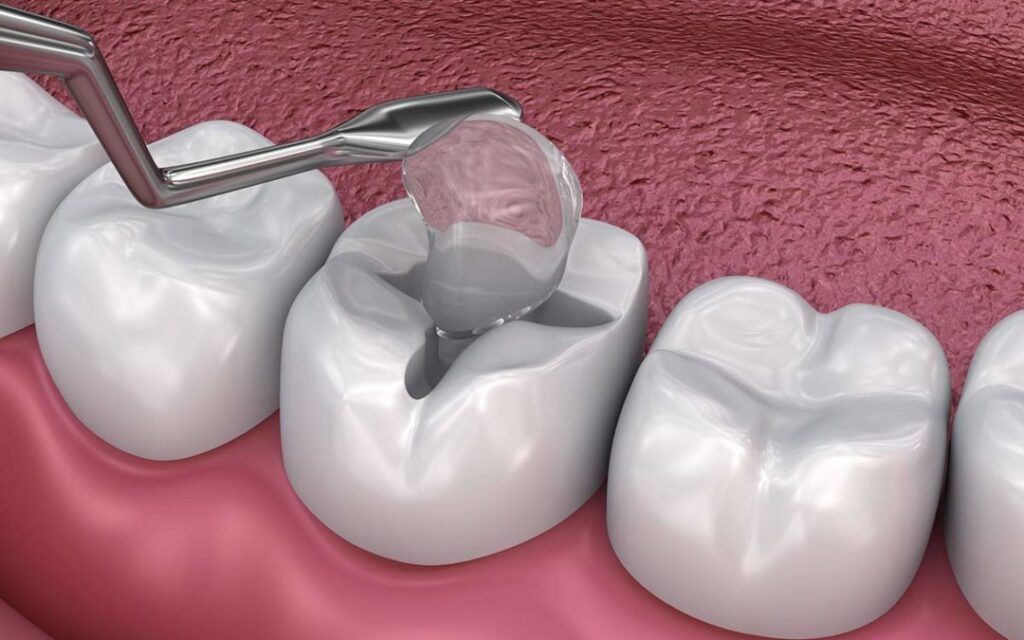What Are Tooth Fillings?
Tooth fillings, a type of dental treatment, are used to repair and fill cavities formed on teeth and stop tooth decay from getting worse. If not treated early, cavities can damage your tooth structure, leading to tooth loss. A tooth filling is the step done before getting a root canal treatment. They help prevent further damage to your teeth.
If you have a decayed tooth, your dentist will remove that part and fill it with a tooth filling. It keeps your teeth secure and maintains the beauty of your smile. Let’s explore the benefits of different types of dental fillings and understand how much a tooth cavity filling costs in Australia.
Types of Tooth Fillings
There are several types of fillings, each with unique features and benefits. Your dentist will select the one that best suits your needs. Here’s an overview of the different tooth fillings:
1) Amalgam Fillings: Amalgam, or silver fillings, are composed of a blend of metals such as copper, zinc, tin, mercury, and powdered silver. They have a metallic appearance and are called silver fillings due to their colour. These fillings are typically used for back teeth since they do not match the colour of natural teeth.
Advantages
- Strong
- Tolerate biting and chewing forces
- Affordable
- Lasts for ten years
- Tooth filling needs one sitting
Disadvantages:
- Wears off with time
- High visibility
- Needs more tooth removal
- Can cause allergies
2) Composite Fillings: Composite fillings are made from composite resins, which include a blend of soft plastic, powdered glass, and other ceramic materials. These fillings are ideal for front teeth because they are a type of white filling that blends seamlessly with natural teeth. Their colour is matched to the colour of your teeth. Suitable for small and large fillings, they typically last around five years.
Advantages:
- They look natural
- Directly bond to and strengthen the tooth
- Completed in one visit (two for inlays)
- More affordable than gold fillings
- Minimal tooth removal
Disadvantages:
- Costlier than Amalgam fillings
- Require two sittings and more time to be placed
- Shrink while fixing and lead to gaps and cavities
- Less durable.
3) Gold Fillings: These fillings are made with a combination of gold alloy and other metals. They are strong and durable but come at a higher cost than other fillings.
Advantages:
- Stronger than other fillings
- Long-lasting and durable
- Ideal for crowns, inlays, and onlays
- Resistant to wear
- Can withstand biting and chewing forces
Disadvantages:
- They are expensive
- High visibility
- Two sittings are needed for the fixture
4) Ceramic Fillings: These are made from porcelain ceramic and look natural. They are used for inlays, onlays, crowns, veneers, and more.
Advantages:
- Last for about seven years
- Look natural
- Stain-resistant
- Durable
Disadvantages:
- Brittle and can break easily
- As expensive as gold fillings
- Require more tooth removal
5)Glass Ionomer Cement (GIC):
These fillings are made from glass powder and organic acids. They release fluoride to help prevent tooth decay and are best suited for areas with low biting pressure.
Advantages:
- Stong and bond well to the tooth
- Safe and non-toxic
- Suitable for children
- Easily repairable
- Can cover a small or medium cavity
- Faster to fix
- Affordable
Disadvantages:
- Less durable
- Cannot bear heavy biting and chewing forces
- Last for less than five years
- Visible and do not match the teeth’ colour
- Colour is easily lost over time and gets stained
What Factors Affect the Cost of Tooth Filling in Australia?
The dental filling cost depends on various factors. There are multiple fillings, and each pricing is based on the material quality and features. The cost of a tooth filling can vary for each case due to the following factors:
- Dental filling procedure
- Type of filling material
- Dentist’s expertise
- Location of the dental clinic
- Time required to complete the filling
- Type of tooth needing the filling
- Size of the cavity or tooth damage
- Clinic set-up and facilities
- Number of teeth needing filling
All these reasons can influence the price of your tooth filling. Before you decide on the tooth filling treatment with your dentist, you can also check online for tooth filling costs near me.
Here is a chart that can provide an approximate tooth filling cost in various locations in Australia. The prices can vary depending on the above-mentioned factors.
| Sr. No. | Location | Approximate Tooth Filling Cost in AUD |
| 1 | Temporary filling in Woolworths | Around $10-$20 |
| 2 | Tooth filling in Sydney | $150 – $350 |
| 3 | Tooth filling in Torrens Ville | $120 – $300 |
| 4 | Tooth filling in Brisbane | $100 – $250 |
| 5 | Tooth filling in Melbourne | $120 – $300 |
| 6 | Tooth filling in Adelaide | $100 – $250 |
| 7 | Tooth filling in Perth | $120 – $300 |
It is advisable to consult your dentist for expert advice before you decide on the filling you need. Follow the guidance given by your dentist to ensure your fillings last long. Regularly consult your dentist regarding concerns and uphold good oral hygiene practices. These measures will not only extend the lifespan of your filling but also help maintain your radiant smile.

